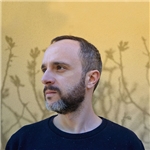In its audiovisual origin, the term postproduction includes the whole range of operations applied to a pre-existing material: editing, addition of other visual or audio sources, providing subtitles, adding voice-overs or special effects. Conceptually, all these actions move away from the value of originality; they do not make things from scratch. Yet paradoxically, in their final concretization, this “lack of originality” rarely renders them exempt from “exothermic” processes, i.e. processes requiring a large amount of effort and energy.
The postproductive attitude has already moved quite far from its audiovisual origins, being present –to a greater or lesser extent– in daily life, both personal and professional. Contemporary architecture has not remained unaffected by this: in particular, it has taken as one of its precepts that the idea of starting each time from scratch is just an illusion. The postproductive approach embraced by contemporary architecture has mainly maintained the status quo, since within its processes of copy, cut, paste, etc., virtuosic displays of effort continue to dominate.
In a complementary way, an alternative understanding of the concept of postproduction, which differs from the one defined above, can be highlighted. This is the “endothermic” or lazy approach, according to a larger movement toward the “minimization” of effort. This corresponds to the famous attitude and preference of the title character in Herman Melville’s short story “Bartleby the Scrivener”, who declares again and again: «I would prefer not to», a declination that neither affirms with diligence nor denies with nihilism.
What if we are now architects who refuse to operate with disproportionate efforts? What if we now prefer to do (almost) nothing? This way, it would not only be just about trying to dwell on manipulating entire designs or fragments of a world already saturated with them, with the purpose of continuously gathering more and more new objects. It would also be possible to postproduce architecture when, with pre-existing materials, we use minimization strategies that would prefer: [1] to MARK (almost) nothing, [2] to NAME (almost) nothing, [3] to INTERVENE (almost) not at all or [4] to SIGN (almost) nothing.
Under these four postproductive declinations, alternative ways of development are appearing within architectural practice. Such new possibilities, based on the intelligent use of pre-existing materials (intellectual or physical), converge in a skill often neglected: laziness.
What if we now try to become actively lazy architects?







